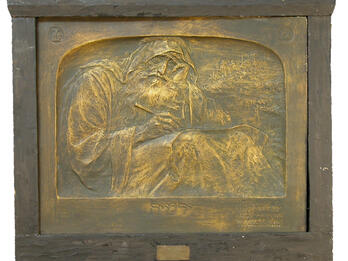Two Towers
Alfred Stieglitz
1911

Creator Bio
Alfred Stieglitz
Born in Hoboken, New Jersey, Alfred Stieglitz was a pioneer of photographic art in America. He was introduced to photography while studying with Hermann Wilhelm Vogel at the Berlin Technische Hochschule. Returning to the United States in 1890, Stieglitz became a partner at the Heliochrome Company, where he experimented with new photogravure chemical techniques and handheld cameras. He soon gravitated to art circles, advocating for the elevation of photography as modern art through the Photo-Secession movement that he cofounded in 1902. He also served as an editor and founder of the journal Camera Work (1903–1917), and he ran the influential gallery 291, in New York City. Through his patronage, Stieglitz introduced European artists and ideals to American audiences; he exhibited many pioneering visual modernists, including Henri Matisse, Pablo Picasso, and Georgia O’Keeffe, whom he married in 1924.
Places:
Subjects:
You may also like

Jeremiah

Fisher Girl of Concarneau

The Sleeping Messiah

Head of a Woman

Illustrations to Song of Songs (4:1–6)


